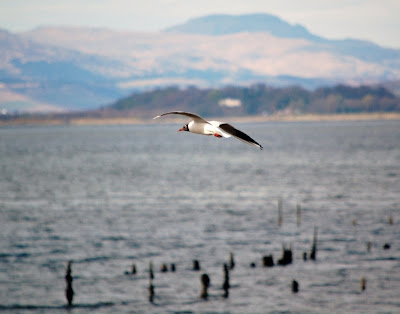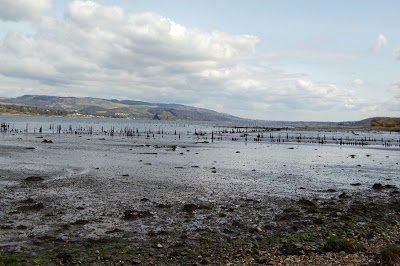The timber ponds of the River Clyde
Hello you. It’s a beautiful day. Let’s go for a walk.
We can leave Newark Castle behind and follow the River Clyde towards the old timber ponds. These are vestiges of the area’s 18th century shipbuilding boom, when tens of thousands of tons of wood were hauled across the sea from North America before being stored in massive log corrals.
But when the storms hit the logs could break their shackles, floating out to block the river and bringing commerce to a halt until they could be rounded up again.
The timber ponds fell into disuse in the early 19th century and since then nature has been reclaiming the gnarled and kelp-covered posts, wearing them away and drawing them slowly downwards. There is something beautifully macabre about them, like last-gasp limbs reaching up through their mudflat graves.
On and on they go for more than three miles, a cemetery of industry that has been taken over by wildlife.
The area is now a nature reserve and best time to experience it is in the winter, when thousands of waterfowl and waders make the mudflats ripple with life.
But even now as the days stretch slowly into summer, there are pockets of redshanks still puttering in the shallows, crows perched here and there like inky beacons, and even sometimes a heron strolling calmly through the water like a benevolent stalker.
Walking along, the sense of space and peace is precarious, like a plaster set along the length of the water, a snaking barricade of trees and fields buffering the guttural hiss of nearby motorway traffic.
Across the Clyde, Dumbarton Castle nestles like stone button in its bulging rock jacket. It is one of those places that never seems to get much closer, no matter how far you walk towards it. Perhaps another time, on another beautiful day, we’ll go.



















